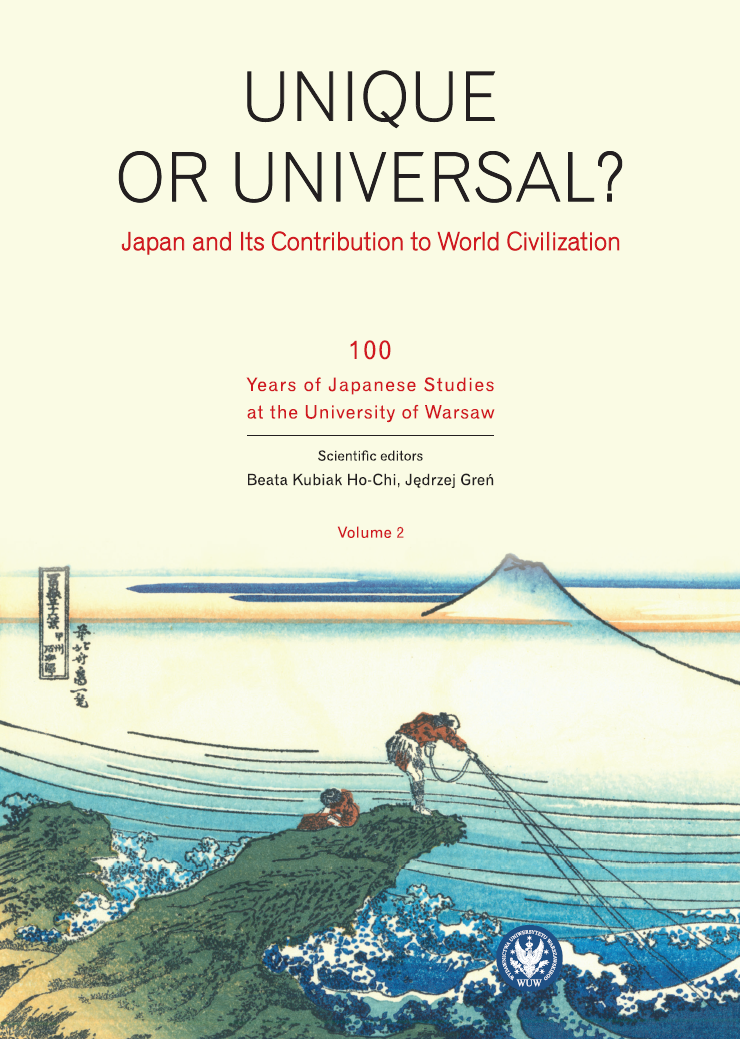Kurosawa Akira’s Adaptations of Shakespeare Influenced by Nō Theater
Kurosawa Akira’s Adaptations of Shakespeare Influenced by Nō Theater
Author(s): Hiranoi Chieko
Subject(s): Cultural history, Studies of Literature, Other Language Literature, Philology
Published by: Wydawnictwa Uniwersytetu Warszawskiego
Keywords: Kurosawa Akira; Shakespeare; Kumonosu jō; Macbeth; Ran; King Lear; nō adaptations
Summary/Abstract: This paper discusses the use of elements of nō, a unique genre of traditional performing arts in Japan, in the movie adaptations of Shakespearean plays directed by Akira Kurosawa (1910–1998). Kurosawa was one of the most distinguished movie directors in Japan. He created two adaptations of Shakespeare plays that were highly acclaimed worldwide, "Throne of Blood" (Macbeth) and "Ran" (King Lear), both of which are set during the civil war period in Japan. Kurosawa effectively introduced a variety of elements borrowed from nō theater, such as showing nō masks to the actors for them to be used as a basis for their facial expressions during the movie and adopting certain stylized movements in some scenes, especially in "Throne of Blood". Some elements of philosophy and motifs characteristic to nō theater are also present in his adaptations. For example, in Ran he introduces the perspective of people withdrawing from secular conflicts and battles while at the same time depicting the nightmare of ghosts rising from battlefields. In "Throne of Blood" the motif of the impermanence of worldly things is emphasized. These Kurosawa depictions of Shakespearean plays are relatively faithful to their original plots. However, each of the two films shows a different approach when it comes to the characters portrayed. In "Throne of Blood", the major characters seem to roughly coincide with the equivalent characters in the original work. However, in "Ran" Kurosawa changes the three daughters present in "King Lear" to the three sons of the protagonist, and consequently he also introduces the sons’ wives. The question is, how is this change necessary for or effective at conveying the director’s interpretation of "King Lear" and presenting his adaptation? This paper shows, using the above-mentioned examples, how incorporating elements of traditional Japanese theater makes Kurosawa’s movies unique in the world-universal context of Shakespearean adaptations.
Book: Unique or universal. Japan and its Contribution to World Civilization. Volume 2
- Page Range: 176-195
- Page Count: 20
- Publication Year: 2023
- Language: English
- Content File-PDF

